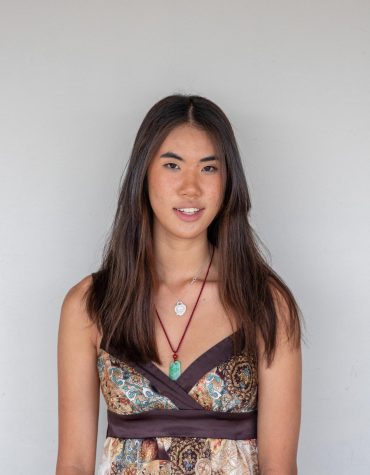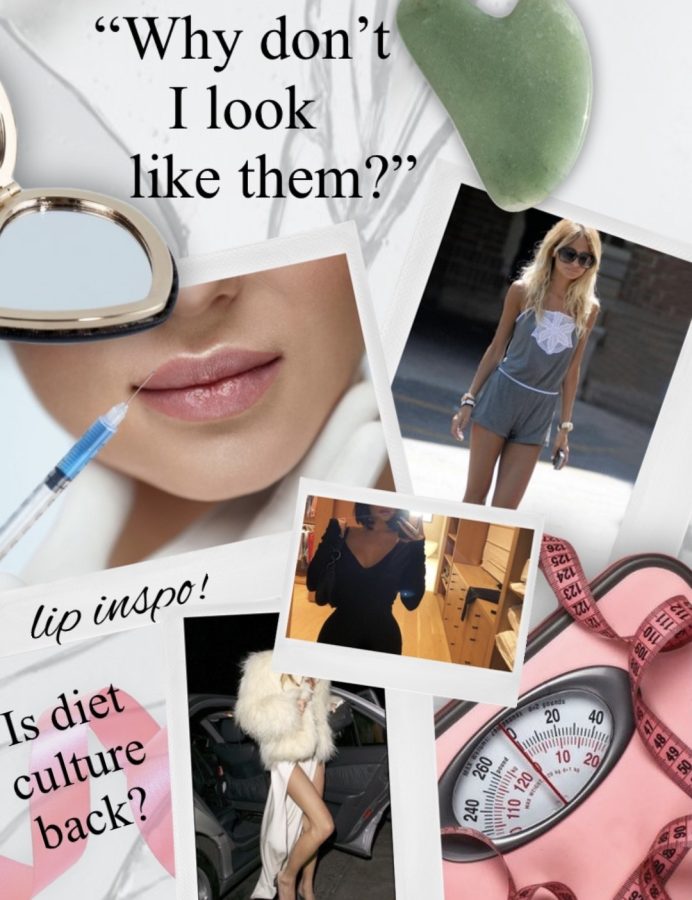Social Media’s Negative Impact on Beauty Standards
The danger of beauty trends is enhanced with the ever-increasing influence of social media.
Social media trends promoting harsh beauty expectations have gotten more intense and common during the last few years. During the mid 1900’s, people in America began to obsess over what food they were putting into their bodies. People began to label foods containing sugar, carbs, and fat as unhealthy. With this, obsessive restrictive eating became more common, and desired body types became even more unattainable. People forced themselves to achieve and maintain as little weight as possible, and were considered healthy for doing so.
Although we now have evolved our understanding of food’s correlation with our external appearance, a thin body type has continued to be a standard. For example, social media trends like “what I eat in a day” featuring small and unbalanced meals in a visually appealing way promote unhealthy eating habits. The harsh beauty standards constantly placed on young teens through social media make it difficult for us to remember how much knowledge we have on how to have a proper relationship with food.
We need to be more conscious of what we post on social media and how it can affect peer viewers; but we also need to be conscious of the amount of toxic social media we consume ourselves, and how we physically or verbally reiterate things we see on social media. This is especially important when it comes to triggering topics like expectations around food and weight.
Freshman Alexandra Baker agrees that “there might be more beauty standards and constantly changing beauty standards because of social media,” however, it’s not only the trends that create false images of attainable beauty.
Along with online trends, some Campo students argue that social media influencers also have a negative impact on today’s difficult beauty standards. Sophomore Angelina Lomeli notices that “when people, especially of younger ages look at models and influencers and they dont look like [them], they tend to have a harmful mindset.”
Lomeli explains how influencers “tend to look the same, or have the same ideals,” and that it would be more beneficial to social media’s young impressionable users “If there [were] more influencers who looked diverse and different.”
Baker adds that influencers are only beneficial to society’s view on beauty, “In the case that they’re supporting that all bodies are healthy and all bodies are beautiful, instead of putting this unrealistic expectation on what everyone should look like.”
Although on the internet it may not seem that society is progressing in its acceptance of one’s natural human body as beautiful; outside the torment of social media, things look different.
We are taking a step away from a the long-time standard that models should be tall, thin, and have little muscle. For example, Paloma Esser, a plus-sized, mixed race (African American, Chilean, and Swiss) model was one of the nominees for 2022 Model of the Year.
In addition to Esser, another full-figured, African American model named Precious Lee who has been featured in fashion magazines such as Vogue and Elle, was also a nominee for 2022 Model of the Year.
Our slow inclusion of plus-sized models into the supermodel business shows a change from past decades like “the 90’s [where] there was surrounding around supermodels and being skinny and having a diet and just looking a certain way,” Lomeli claims.
Although in modern society it is evident that curvier body types are starting to be more widely accepted, I begin to wonder “what is the mindset of our majorly social media influenced school?”
When people see things happening on social media, whether through posts, hashtags, or comments, they often repeat the things they see or read. Sometimes people don’t always think about how those words can affect others, and risk getting a different reaction from one they may have seen on social media.
Abrasive words spoken about a person’s external appearance only increase the influence of harsh beauty expectations. Although many students may think that Campolindo is a relatively accepting environment (and I believe it is), bullying can happen anywhere.
Therefore, it is important that before commenting on someone’s appearance, make sure that the thing you are saying is positive without a doubt, and won’t be taken negatively in any way. With today’s beauty standards, it is really easy for people to develop insecurities.
By always being kind, positive, and supportive to our peers, we can decrease social media’s negative impact on our school and help raise confidence among the student population.
Your donation will support the student journalists of Campolindo High School's The Claw. Your contribution will allow us to produce more issues and cover our annual website hosting costs.

Raena Chan is a senior and a 2nd year journalism student. She specializes in writing and has been interested in it since the 7th grade.
Her interest...


